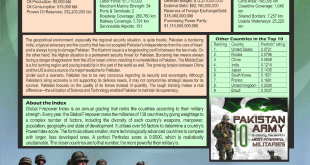Your future hinges on the 3-hour performance that you actually give on paper in the examination hall. Every year, thousands dream to be a CSP officer; and to make this dream come true, extreme hard work and relentless, devotional efforts are put in. Remember, here your aim is only to get excellent marks so that you may secure a safe merit position to land in your fave occupational group.
The data of recent years show that, ever year, nearly 700 to 900 candidates get through the written part while the number of available seats is approximately 300. Divide these 300 seats into provincial quotas and then into 12 occupational groups to understand what the competition is all about. Barring toppers, first 50 to 70 candidates get allocated to their top preference. Equation is very simple; more marks, better allocation!
While answering a question the most significant thing to keep in your mind is to communicate your viewpoint strongly through convincing arguments using lucid language. Let’s have a look at 10 steps that will surely help you answer the question in a way that convinces the examiner.
1. Self-analysis & Self-control
This is what you have to do well before you actually sit in the examination hall. Many candidates fail because they couldn’t defeat their fears. That makes your target difficult and formidable. Know yourself and control your emotions. All CSS candidates are, more or less, of same intellect; however, calmer and more rational individuals get through. You can also be one of those few if you take into consideration two basic things: (i) accept the reality and (ii) look ahead and find solutions.
For instance, you are not a good memorizer, you cannot write well, sitting too long is difficult for you, you have some problems in finishing your answer properly, a sudden emotional setback or some tragedy has overwhelmed you, and so on; many such issues can be challenging for you. But to accept this challenge and overcome it is the real key to success. Don’t shy away from your weaknesses and unfavourable circumstances; unfold and rectify them.
2. Time Management
Time management is a skill and you need to attain it. Time is very crucial; especially when you are sitting in exam hall. You have 2 hours and 30 minutes to attempt 4 questions i.e. 37½ minutes per question. Unless you have developed the habit of finishing your answer within 30 minutes and have practiced it well before examination, you will start feeling the pressure as soon as you get the question paper. Remember, time should be managed in such a way that you ward off unwanted pressure that can destroy your efforts and can let you down.
3. Reading Question Paper
It is absolutely self-destructive to read the first question and start writing the answer offhand. Give at least 3 readings to the question paper. First reading is just cursory. In second reading, decide which questions you can answer the best. In third reading, mark those questions and be sure about them.
4. Brainstorming & Outlining
Next, do brainstorming and make outlines of questions you are going to attempt. This can be done while the third reading. This saves your time and makes your written expression eloquent. Brainstorming clarifies that for which question you have ample material. Outlines will make it clear that how to answer and how much to answer and your writing will be more coherent and fluent.
5. Sequence of Attempting Questions
Generally, candidates attempt the best question first and the weakest question in end. This is a passive approach. All questions must be, preferably, given equal time while the weak one should be given due importance as giving up on your 20 marks isn’t a wise choice.
6. Opening the Answer
Always give proper beginning to your answer. The starting point must be the introduction of your question. Give a comprehensive introduction. Remember, Background or History is a different thing. Opening sentence must be the topic sentence. Talk expansively about the topic and in the end give thesis statement. You can certainly begin with quotation or reference but it must be relevant to the statement of question.
7. Use of Headings, Quotations, Figures, Maps and References
Headings should be elaborate; avoid one-word headings to facilitate the examiner. When quoting, use proper quotations and mention the reference too. In Islamiyat paper, while quoting from the Holy Quran and the Ahadith, don’t ever quote without proper reference. Give maximum quotations to support your argument. Also give facts and figures with references. Vague, untrue and bogus figures must be avoided. Reference of any official document can be given from which figures have been quoted. Draw diagrams or maps wherever they are part of answer. As in Geography I, diagrams elucidate answer and in Geography II, maps are drawn to elaborate answer.
8. Building Answer
Build answer with cogent arguments. Pragmatic and logical opinion containing statistics, references, sociopolitical, religious and economic factors; and domestic and international aspects should be covered. Always avoid sweeping statements, biased views and planted answers. Try to make a separate heading of “Analysis†and give very comprehensive and to-the-point remarks.
9. Closing the Answer
Conclusion must be as strong as introduction was. Recapitulate all the ideas that you discussed and finish answer strongly. Analysis and Conclusion can be brought under single heading such as ‘Final Comments or Concluding Ideas’ or ‘Ending Remarks or Suggestive Note’. Your answer remains incomplete without conclusion so never ignore it!
10. Conclusion
Write relevant, overcome your weaknesses, manage your time well and control your emotions. It is totally an absurd idea that CSS is a game of chance or a matter of luck. Work hard consistently, think positive, stay focused, prepare scientifically and leave rest to the Almighty. Enhance your knowledge base. Your expression should be convincing and logical. Practice 6 hours writing on the pattern of real exam so that you do not feel
Sample:
Current Affairs 2013
Q2: Discuss the successes and failures of political parties in bringing about a meaningful change in Pakistan.
Q3: Discuss the current socio-political and security situation of Afghanistan and its implications for the neighbouring countries.
Q4: How will “Arab spring” effect the political and security environment in the Arab World?
Q5: Discuss the importance of Pak-China relations. How does this relationship effect political and security environment in South Asia?
Q6: Discuss the causes of extremism and militancy in Pakistani society. Suggest ways and means for the state organs to overcome these problems.
Q7: Resolution of Kashmir issue between India and Pakistan can bring peace and prosperity in the region. Discuss.
Q8: Critically evaluate the causes of Energy crisis in Pakistan and its consequences for the economic growth and social fabric in the country.
Step 1, 2 & 3: Reading Question Paper, Brainstorming & Outlining, and Sequence of attempting
After doing all this exercise and consuming around 12 minutes, I reach the following point.
I can attempt Q2, Q3, Q 5, Q6, Q7 & Q8
After brainstorming and outlining, I finalized Q5, Q6, Q7 & Q8
Sequence of attempting questions will be Q6, Q8, Q5 and then Q7.
Step 4, 5, & 6: Opening the answer, Building argument and Closing the answer
Q6: Discuss the causes of extremism and militancy in Pakistani society. Suggest ways and means for the state organs to overcome these problems.
Introduction:
Causes: (Enlist main causes)
Impacts: Discuss impacts from all dimensions)
Remedial Measures (Give analysis with suggestions)
Conclusion:
I would just present the introduction here:
Introduction
Extremism has phenomenally damaged the national fabric of Pakistan. Post-9/11 scenario never proved favourable for Pakistan in longer run and now post-Osama scenario is even more complicated and dreadful. Pakistan is passing through adverse circumstances and it’s because of security challenges in the region. Faltering economy, collapsing institutions and deteriorated law and order situation are the horrible results of extremism in Pakistan. Regardless of the US policies, designs of neighbours and plans of regional powers, Pakistan has to face the formidable task of defeating forces of extremism and bringing back social stability and economic growth. Drone attacks, suicide bombings, target killings, sectarian riots and violent protests are the order of the day. Law-enforcing agencies, administrative machinery, parliament and judiciary, all look docile in front of this gigantic mission of curbing extremism. It is tremendously important to understand causes and analyze ramifications of this menace and discuss plausible suggestions.
By: Sikander Zishan
 Jahangir's World Times First Comprehensive Magazine for students/teachers of competitive exams and general readers as well.
Jahangir's World Times First Comprehensive Magazine for students/teachers of competitive exams and general readers as well.


